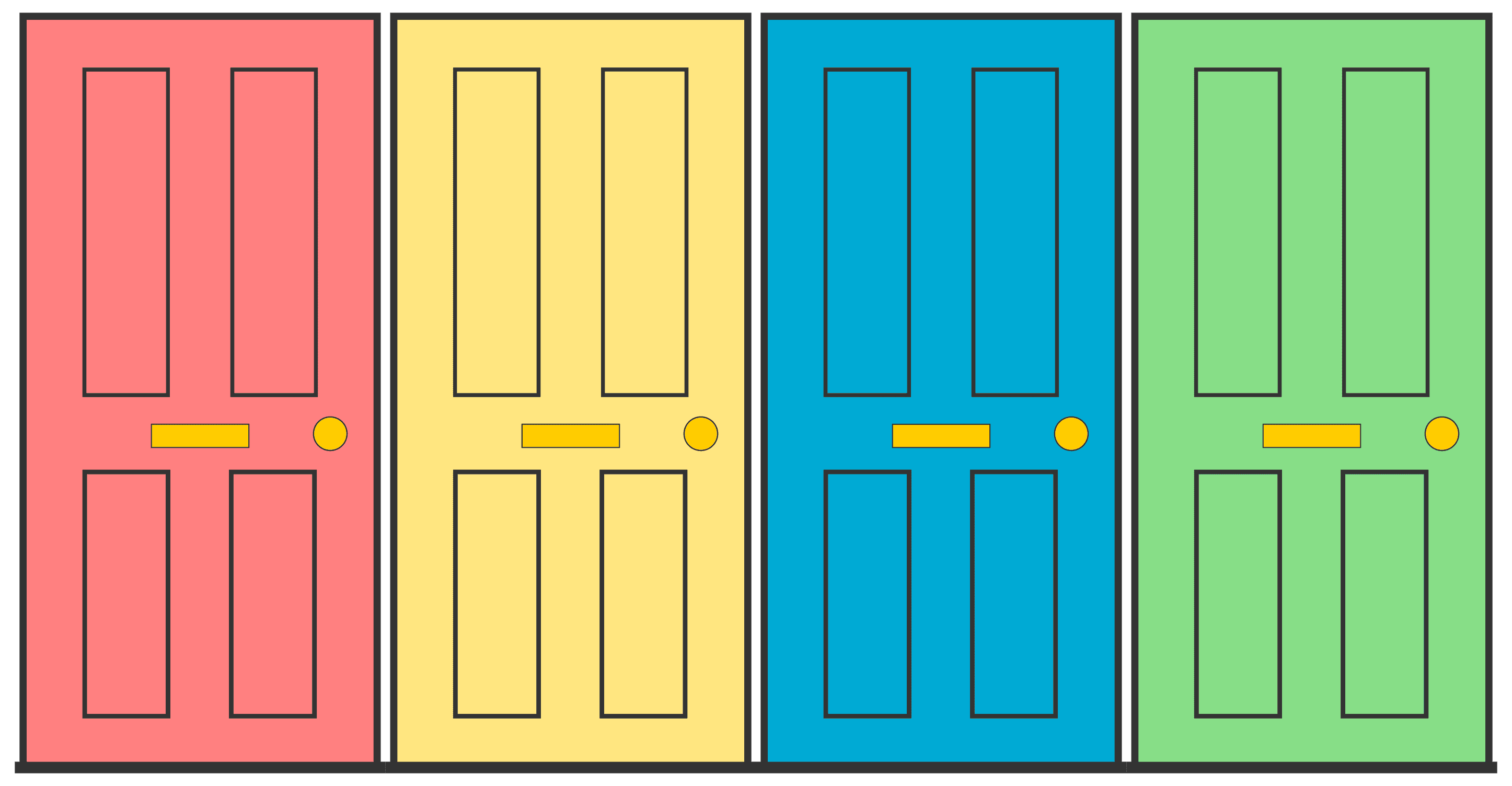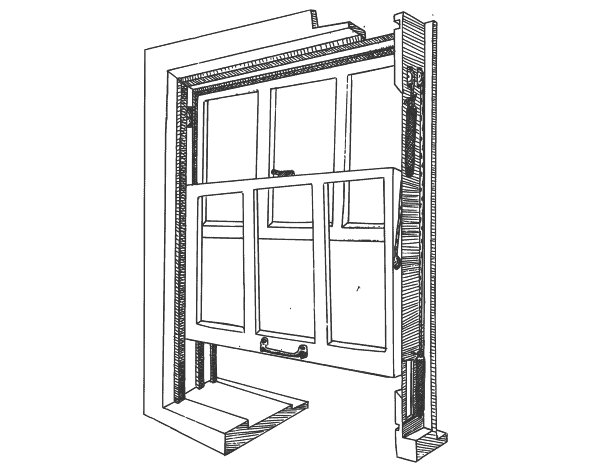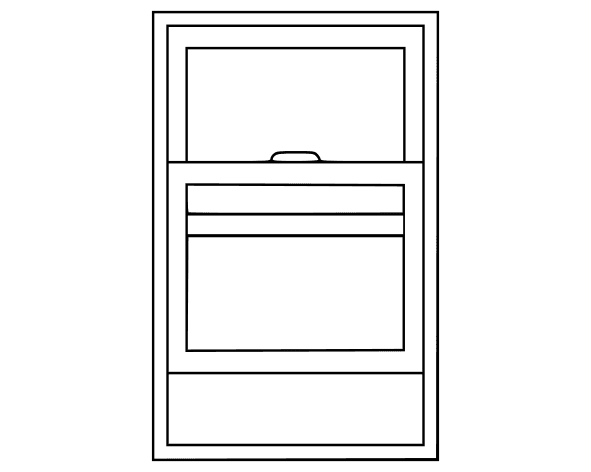
Replacing the doors in your home may not be the first thing that comes to mind when considering home improvement projects. However, home door replacement can significantly enhance the look and functionality of your house. In this guide, we will explore the need for door replacement, the different types of home doors available, factors to consider when choosing a new door, the door replacement process and costs, and the pros and cons of hiring a professional versus doing it yourself.
Do You Need Door Replacement?
Your doors are an essential part of your home. They not only provide security and privacy, but also contribute to the overall look and value of your property. However, over time, wear and tear can take a toll on their appearance and performance. It’s important to recognize the signs that show your door needs replacing.
Difficulty Opening and Closing
One of the most common signs that it’s time to replace your door is difficulty opening or closing. If you find yourself struggling with a sticky or squeaky door, it may be a clear indication that the door has reached the end of its lifespan.
Drafts or Airflow
Another sign to look out for is drafts or leaks around your door. If you feel a noticeable temperature difference near your door or notice a draft of air coming through, it could indicate poor insulation. Inefficient insulation not only reduces the comfort of your home but also leads to higher energy bills.
Increased Energy Costs
Speaking of energy bills, sudden increases in your monthly utility costs can be a red flag that your door needs to be replaced. Older doors, especially those with worn-out seals or gaps, can allow for significant outside temperature transfer.
Noticeable Damage
The condition of your door affects the overall appearance and curb appeal of your home. If your door is damaged, warped, or has noticeable cracks, it not only detracts from the visual appeal but can also lower the perceived value of your home. Not to mention, a broken door can be an invitation for intruders.
Home Door Replacement Costs
So, you need to replace one or more of your home’s doors but don’t know where to start? Unlike items that have a fixed price, the cost of door replacement can sway based on various factors. Below is a detailed breakdown of door replacement costs to help you decide which door type and style is best for your home improvement project:
Door Sizes and Measurements
Much like windows, the dimensions of your door play a major part in cost. Standard-sized doors, commonly found in widths of 30, 32, or 36 inches and a height of 80 inches, tend to be more cost-effective, while larger doors or those with non-standard dimensions usually demand a higher budget due to increased material and labor needs.
Standard Door Frame Dimensions
Normal Door Size
Rough Opening Size
30″W x 80″H
32¼”W x 82″H
32″W x 80″H
34¼”W x 82″H
32″W x 96″H
34¼”W x 98″H
36″W x 80″H
38¼”W x 82″H
36″W x 96″H
38¼”W x 98″H
Door Replacement Costs by Style
The style of your door can add to the difficulty and cost of replacement. For instance, a custom-designed door with intricate details or unusual shapes will cost more compared to a standard rectangular door.
Door Style
Price Range
Single Door
$225 – $1,850
Double Door
$800 – $6,325
French Door
$650 – $5,775
Patio Door
$375 – $2,500
Cellar Door
$750 – $5,250
Fire-Rated Door
$450 – $1,425
Custom-Made
$875 – $7,385
Door Replacement Costs by Material
Different parts of the home require different door materials, and the door material choice significantly impacts the overall expense. Common materials include wood, steel, glass, and fiberglass – each with its own set of advantages and price points.
Door Material
Budget Range
Hollow-Core
$110 – $510
Solid Wood
$285 – $1,635
Fiberglass
$345 – $3,310
Steel
$295 – $3,035
Aluminum
$235 – $3,185
Door Replacement Costs by Type
Not every door type is the same, and it’s important to pair the correct type with the requirement. Function and design of different door types will affect the overall cost. Sliding glass doors, storm-rated doors, exterior entry doors, and interior doors come with varying price tags due to their unique features and installation requirements.
Door Hardware and Accessories Costs
The hardware you choose, such as locks, handles, and smart security systems, can also add to the cost. Opting for high-end or smart hardware will inevitably drive up the price. Research hardware options that compliment the style of your door, while also ensuring the price point is within range.
Hardware
Price Range
Hinges
$3 – $50
Knob & Lock Sets
$35 – $315
Interior Handles
$15 – $75
Jambs
$15 – $90
Deadbolt Locks
$25 – $125
Smart Lock
$175 – $725
How to Measure Door Size for Replacement
When measuring a door for replacement, start by measuring the width and height of the existing door frame. Use a tape measure to get accurate dimensions from the inside edge of the frame to the opposite inside edge. Measure both the width and height at three points: top, middle, and bottom. Take the smallest measurement for the width and the tallest measurement for the height to ensure a proper fit.
Additionally, note the door’s thickness, which is typically around 1.75 inches for interior doors and 2.25 inches for exterior doors. These measurements will help you choose the right replacement door size when shopping for a new one. Some other aspects to consider when measuring for door replacement:
- Swing Direction: Determine the swing direction of the existing door (whether it swings inward or outward) to make sure you purchase a replacement door that swings in the same direction.
- Hinge Locations: Measure and note the locations of the door hinges on the frame to confirm that the new door aligns correctly with the hinges.
- Handle and Lockset: Measure the height of the current handle and lockset from the bottom of the door so that they align properly with the new door. If you plan to change the hardware, make note of the desired heights for the new handle and lockset.
- Threshold Height: For exterior doors, measure the height of the threshold or sill from the floor so that the new door will match the existing threshold height.
- Jamb Depth: Measure the depth of the door jamb, which is the vertical part of the frame that the door closes against. This measurement helps you choose a replacement door that fits snugly into the jamb.
Understanding key door terminology and industry-standard sizes ensures a great fit and avoids costly mistakes. Below are some commonly used door measurement terms:
- Rough Opening: The rough opening refers to the dimensions required to fit a pre-hung door, which includes both the frame and the door slab.
- Jamb Size: The jamb size measures the depth of the door frame rather than its width. It should cover the sheathing or siding and the wall stud.
- Net Frame Dimension: The net frame dimension is the total width of the door frame.
- Masonry Opening: If your home features a brick or masonry exterior, the masonry opening is the space between the bricks surrounding the door.
Choosing the Right Door Style for Your Home
Choosing the right door for your home involves considering various factors and understanding how different door styles can impact your home’s style. First and foremost, you need to think about your budget. Doors come in a wide range of prices, so it’s important to determine how much you’re willing to spend. Keep in mind that while some doors may be more expensive upfront, they may also offer greater durability and energy efficiency, which can save you money in the long run.
Another important factor to consider is the climate in your area. If you live in an area with extreme weather conditions, such as heavy rain or extreme temperatures, you’ll want to choose a door that can withstand these elements. Look for doors that are weather-resistant and have good insulation properties.
Security is also a key consideration when choosing a door. Depending on your location and personal preferences, you may want to opt for a door that offers greater security features, such as multiple locks or reinforced materials. Many modern doors do a good job of balancing style and security so that your home is both visually appealing and safe.
In addition to the practical aspects, you should also think about the maintenance requirements and the overall lifespan of the material. Some door materials, such as wood, may require additional upkeep (painting or staining) to keep them looking their best. On the other hand, materials like fiberglass or steel are generally low-maintenance and can withstand the test of time with minimal upkeep.
How Door Styles Impact the Home
The style of your door can significantly impact the overall look and feel of your home. From traditional to modern, there are door styles to match a variety of architectural designs. If you have a traditional or classic home, you may opt for a wooden door with details, such as paneling or decorative glass inserts. If you have a more contemporary or modern home, you may prefer a sleek and minimalist door design.
When choosing a door style, it’s important to also consider the interior of your home. The door should complement the overall design and decor of the living space. For example, if you have a rustic interior, a door with a natural wood finish can enhance the warm atmosphere. Alternatively, if you have a minimalist interior, a door with a simple and streamlined design can contribute nicely.
Remember, the door is the first entry point to your home, and it sets the tone for the interior. It’s an opportunity to make a statement and showcase your personal style. Whether you choose a bold and vibrant color, or a more subtle and understated design, the right door can enhance the impression of your home.
What is the Best Door Material and Type?
The best material for a home door depends on your specific needs and preferences. Wood doors offer timeless beauty and warmth, making them ideal for traditional and classic properties. Steel doors are a smart choice for exterior uses in high-traffic areas, since they provide excellent security and durability. Fiberglass doors are a versatile option, known for their resistance to harsh weather conditions and low maintenance. Glass doors, while less common for exterior use, can bring natural light and a modern touch to interior spaces.
Ultimately, the best material for your home door will depend on factors like style, security, and climate considerations. Door prices range from $50 for basic interior doors to more than $4,000 for high-end options. Homeowners spend an average of $110 to $550 on interior doors and $320 to $1,550 on exterior doors, with the material of the door playing a major part in determining price.
Wood Doors: Wooden doors are a classic choice that offers durability, insulation, and a timeless look. They come in various styles, finishes, and designs that can be customized to match your specific preferences. Whether you prefer a traditional panel design or a more contemporary style, there is a wooden door option to suit your taste.
- Interior Wooden Doors: These typically cost between $55 and $815. Engineered solid wood doors range from $190 to $2,000+.
- Exterior Solid Wood Doors: Prices for these doors can range from $420 to $5,600. Factors influencing the cost include: sidelights, glass, a transom window, and whether the door is hollow or solid.
Steel Doors: Steel doors are known for their strength, durability, and security. They are resistant to dents, provide protection against forced entry, low maintenance, and can withstand harsh weather conditions. Additionally, they often come with advanced locking systems, and are available in various designs and finishes. Steel doors average $230 to $450 for a basic design, and $710 to $3,950 with sidelights.
Fiberglass Doors: Fiberglass doors offer the look of wood with additional benefits. They are resistant to warping, cracking, and rotting, making them an ideal choice for high-moisture areas. Fiberglass doors are also energy efficient and provide excellent insulation. Unlike wood, fiberglass does not expand or contract with changes in temperature and humidity, and they can be painted or stained to mimic the appearance of different wood species. The average cost of fiberglass doors ranges from $205 to $4,350.
Glass Doors: Glass doors bring elegance and sophistication to interior spaces, offering a unique way to enhance natural light and create an open atmosphere. They come in various styles, including clear, frosted, or textured, allowing you to control privacy and the look. While they may be less common for exterior use due to security and insulation concerns, interior glass doors can add a modern touch to your home’s design, making them an appealing choice for those seeking a contemporary look.
- Decorative & Glass Steel Doors: These can range from $525 to $3,100.
- Fiberglass Entry Doors with Glass: Prices range from $350 to $7,500 for the door alone, and up to $9,000 for the complete installation.
- Sliding Glass Doors: Typically used as patio doors, can cost between $550 to $6,500 for the door alone and up to $7,400 for the complete installation.
- Glass Storm Doors: The price can range from $210 to $850, and the total installation cost can be up to $1,500.
Sidelights and Transoms
Adding sidelights or transoms to a door design can update your home’s entrance, but comes with added costs. Sidelights are slender glass panels installed alongside the door and the costs for adding them depends on the door material and the design. Generally, this addition will increase the cost for door installation due to the additional materials and labor required.
Transoms, which are horizontal windows placed above the door, allow more light to enter the home and create an open feel. The cost of including a transom varies based on size, design, and materials used. This addition adds to the overall cost of the door installation due to the labor involved in fitting the transom with the existing structure. Overall, while sidelights and transoms can create greater curb appeal and add to the value of your home, it’s important to warrant the addition is worth the investment.
- Entry Doors with Sidelights: These cost between $725 and $5,200 for steel doors, and more for other materials including wood and fiberglass.
- Front Door with Sidelights and Transom: Replacing a front door that includes these features can cost between $1,750 and $8,800.
Choosing the Right Hardware for Your Door
Door hardware is a sometimes overlooked aspect of home door maintenance and replacement, but it impacts both the functionality and look of your doors. The costs associated with replacing door hardware can vary, depending on the quality, design, brand, and material of the hardware you choose. If you opt for professional installation, there will be additional labor costs, but professional installation ensures that the hardware is correctly installed. Additionally, if you are working with a slab door that doesn’t have pre-drilled holes for the hardware, there might be extra charges for drilling these holes.
- Hinges ensure smooth swinging and proper alignment of the door. The cost for hinges generally ranges from $10 to $20 per door. This price can vary based on the material (such as brass, stainless steel, or bronze) and the design complexity. Higher-end hinges with decorative designs or additional features like self-closing options can cost more.
- Door knobs are a must for any door and can complement the look of the door itself. They are available in a wide range of styles, from traditional to contemporary, and their prices can range from $10 to $150 per knob or handle. The cost is influenced by the material (metal, crystal, glass), finish, and security features. For instance, a basic interior door knob will be on the lower end of the price spectrum, while a high-quality, design-focused exterior knob with enhanced security features will be more expensive.
- Deadbolt locks provide the security of a door. The price for deadbolt locks typically falls between $20 and $300. Factors affecting their cost include the lock’s security rating, material, and additional features like smart technology integration, which allows for keyless entry and remote locking/unlocking.

How much does window replacement cost?
WinGuys window cost calculator allows you to set price range, brand quality, and many other details to better estimate home window replacement costs.
The Door Replacement Process
Door replacement involves a few steps, but following a guided approach ensures a successful and hassle-free installation. Before starting, remove any items or furniture near the door and clear a path to give the installer enough space to work. Additionally, you may want to review any warranty information or paperwork provided by the manufacturer before moving forward with the door replacement.
Step-by-Step Guide for Door Replacement
1. Take measurements of your existing door
2. Unscrew the hinges and remove the existing door
3. Clean the door frame and remove any debris
4. Position the new door into the frame and secure it in place
5. Attach the hinges and confirm the door is properly aligned
6. Test opening and closing the door, as well as the door lock
7. Seal any gaps or spaces around the door to ensure proper insulation
8. Paint or stain, if desired
Professional vs. DIY Door Replacement
A door replacement project can be simple or complex, and many homeowners choose to hire a professional when unsure of the requirements for the job. If you decide to tackle the task yourself, the cost for a new door and necessary supplies generally ranges from $300 to $1,200. While opting for DIY could save some expenses, the benefits of hiring a professional are considerable. Professional installers provide accurate and proper installation. Additionally, they offer peace of mind through warranties and guarantees on their workmanship. Relying on skilled professionals not only streamlines the process, but also guarantees a securely installed door.
Let’s take a closer look at the pros and cons of hiring a professional vs. DIY for your door replacement:
Professional Home Door Replacement
Professional door replacement begins with taking measurements of your new door, considering factors like door type, material thickness, and size. Experts should be able to remove the existing door without damaging the door frame. The professional may need to clean and prepare the door frame, then proceed with the door installation.
The cost for door installation typically ranges from $40 to $90 per hour for professional service. Most door replacement projects can be completed within a few hours, although more complex installations may require additional time. While this option may be more expensive than a DIY approach, the benefits of professional installation include assured quality, time efficiency, and warranties on the work.
Pros
- Professional Expertise and Experience: When you hire a professional, you benefit from their knowledge and experience in door replacement. They have the skills to handle any challenges that may arise during the installation process.
- Efficient and Timely Installation: Professionals are trained to work efficiently and complete the job in a timely manner. They have the necessary tools and equipment to ensure a smooth installation process.
- Warranty and Guarantee on Work: Hiring a professional often comes with the added benefit of a warranty or guarantee on the work. This provides you with peace of mind knowing that if any issues arise after the installation, the professional will take care of it.
Cons
- Higher Cost Compared to DIY: One of the main drawbacks of hiring a professional is the higher cost associated with their services. You will need to consider your budget and weigh it against the benefits of professional installation.
- Less Hands-on Control over the Project: When you hire a professional, you are entrusting them with the task of replacing your door. This means you have less control over the project and may not be able to make on-the-spot decisions or changes.
DIY Home Door Replacement
Replacing a door as a DIY project can be appealing for those who enjoy hands-on work. However, because of their size and the need for proper alignment, doors may require extra help. DIY efforts can sometimes result in issues like misalignment, poor sealing, or difficulty opening and closing. Before committing to a DIY door replacement, it’s important to consider these key aspects:
Pros
- Lower Cost: One of the biggest advantages of DIY door replacement is the cost savings. By doing the project yourself, you can avoid the expenses associated with hiring a professional.
- Hands-on Control: When you take on the task of replacing your door, you have complete control over every aspect of the project. You can choose the materials, design, and make any changes as you see fit.
Cons
- Time-consuming and Labor-intensive: DIY door replacement requires a significant amount of time and effort. You will need to dedicate hours completing the installation, and it can be physically demanding, especially if you are not used to this type of work.
- Requires Knowledge and Skill for Proper Installation: Installing a door may seem straightforward, but it requires a certain level of knowledge and skill to ensure it is done correctly. Improper installation can lead to issues such as air leaks, security risks, and decreased energy efficiency.
- No Warranty or Guarantee on the Work: Unlike hiring a professional, DIY door replacement does not come with a warranty or guarantee. If any problems arise after the installation, you will be responsible for fixing them.
Ways to Reduce Door Replacement Costs
Here are some smart strategies to minimize your home door replacement expenses:
- Opt for Standard: Customized doors come at a premium. Minimize customizations and maintain standard sizes to keep costs in check.
- Budget-Friendly Brands: Even on a budget, you can find top-quality replacement doors. Compare affordable brands to find the perfect balance between cost and quality.
- Prioritize Energy Efficiency: Invest in energy-efficient doors. Enhanced insulation not only reduces long-term expenses but also contributes to a greener home. Consider adding storm doors, which can slash heat loss through doors by 20% to 60%.
- Seek Multiple Quotes: Knowledge is power. Gather quotes from at least three reputable door installers.
- Strategic Timing: Timing is crucial. Plan your door replacement during the slower seasons, such as summer or winter. During these periods of reduced demand, companies are more likely to offer competitive prices.
- Bundle for Discounts: Thinking of replacing multiple doors? Many door companies provide discounts when you opt to replace several doors at once. Take advantage of these bundled deals to maximize your savings.
Maintaining Your New Door
Maintaining your new door is essential for longevity and performance. By following a few simple cleaning and care tips, you can keep your door looking and working its best for years to come.
Cleaning and Care Tips
Regularly clean your door using mild soap and water to remove dirt and debris. This simple task not only keeps your door looking clean and fresh, but it also helps prevent the buildup of grime that can lead to damage over time. Avoid using abrasive cleaners or harsh chemicals that may damage the door surface. Instead, opt for gentle cleaning solutions that are safe for the material of your door. In addition to regular cleaning, it is important to periodically lubricate the hinges and locks of your door. This helps maintain smooth operation and prevents any unnecessary strain on the hardware. Using a lubricant specifically designed for doors, apply a small amount to the hinges and locks, ensuring they are well-coated.
Regular Maintenance Checks
Performing routine maintenance checks can help identify any issues early on. Inspect the door for any cracks, gaps, or signs of wear. These can be indicative of underlying problems that, if left unattended, may lead to more significant damage. If you notice any issues, consult a professional to assess the situation and provide the necessary repairs. Another important aspect is examining the weatherstripping and seals of your door. These components keep out drafts and maintain energy efficiency. Over time, weatherstripping and seals can wear down or become damaged, reducing their effectiveness.
Replacing a home door is a valuable investment that enhances your home’s appearance, security, and energy efficiency. Whether you hire a professional or take on a DIY project, a well-chosen, properly installed door offers lasting benefits.




